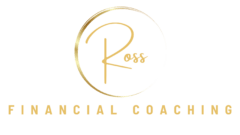
Living paycheck to paycheck can be incredibly stressful, leaving you with little room for financial freedom or the ability to save for the future. If you’ve ever found yourself scrambling to cover bills or expenses just before your next paycheck arrives, you’re not alone. Breaking free from this cycle requires conscious effort, but with the right approach, it’s possible to gain control over your finances and build a more stable future.
In this blog, we’ll explore practical steps to help you break the paycheck-to-paycheck cycle and start building a financial cushion that offers more security and peace of mind.
Why Do People Live Paycheck to Paycheck?
Living paycheck to paycheck happens for many reasons. Often, it’s due to a combination of low income, high expenses, and poor financial habits. Here are a few common reasons people fall into this cycle:
- Lack of a budget: Without a clear plan for how to manage your money, it’s easy to overspend or mismanaged funds.
- Overspending on non-essentials: While it’s tempting to indulge in lifestyle expenses like dining out, entertainment, or shopping, consistent overspending can drain your funds.
- Unexpected expenses: Without an emergency fund, even small unexpected expenses— like car repairs or medical bills—can throw your budget off track.
- Debt payments: High debt, especially with high-interest rates, can consume a significant portion of your income, leaving little room for savings or financial flexibility.
The good news is that no matter the reason for your current financial situation, there are actionable steps you can take to gain control.

- Create a Realistic Budget
The foundation of financial stability starts with a budget. Creating a budget allows you to see exactly where your money is going and helps you prioritize what’s important.
Steps to Create Your Budget:
- List your income: Start by listing all your sources of income—whether it’s from a full-time job, side hustle, or other streams.
- Track your expenses: For a month or two, track every expense to get an accurate picture of where your money is going. Categorize these expenses into essentials (rent, groceries, utilities) and non-essentials (dining out, shopping).
- Set spending limits: Set limits for each category of spending. Prioritize necessary expenses first and look for areas where you can cut back.
- Include savings in your budget: Even if it’s a small amount, make saving a priority in your budget. Automating your savings (directly transferring a portion of your paycheck to savings) makes this process easier.
Use Budgeting Tools:
If you’re new to budgeting or struggle with tracking your spending, consider using budgeting apps like Mint, YNAB (You Need a Budget), or EveryDollar to help you stay on track.
- Build an Emergency Fund
An emergency fund is your financial safety net, giving you a cushion to handle unexpected expenses without relying on credit cards or loans. Having an emergency fund is crucial for breaking the paycheck-to-paycheck cycle because it prevents you from falling back into financial stress when life throws you a curveball.
How to Start Building Your Emergency Fund:
- Set a small initial goal: If saving three to six months of living expenses seems overwhelming, start by saving $500 to $1,000. Once you hit that target, continue building over time.
- Automate your savings: Set up an automatic transfer from your checking account to a dedicated savings account each payday. This makes saving consistent and automatic.
- Use windfalls: Whenever you receive extra money—like a tax refund, bonus, or cash gift— direct some or all of it to your emergency fund.
- Prioritize Debt Repayment
High-interest debt can be one of the biggest obstacles to breaking the paycheck-to-paycheck cycle. If a large portion of your income is going toward debt payments, it’s essential to develop a plan to pay off that debt as quickly as possible.
Two Popular Debt Repayment Strategies:
- Snowball Method: Focus on paying off your smallest debt first while making minimum payments on the rest. Once the smallest debt is paid off, roll that payment into the next smallest debt, building momentum.
- Avalanche Method: Focus on paying off the debt with the highest interest rate first. This strategy saves you more money in interest over time.
Whichever method you choose, the key is consistency. As you eliminate debt, you’ll free up more of your income to allocate toward savings and other financial goals.
- Cut Back on Non-Essentials
One of the fastest ways to free up more cash is by cutting back on discretionary spending. This doesn’t mean you have to eliminate all fun or enjoyment from your life, but small adjustments can make a big difference.
Ideas for Cutting Back:
- Dining out: Limit how often you eat out and focus on cooking at home. Meal prepping can save both time and money.
- Subscriptions: Review your subscriptions—like streaming services or gym memberships— and cancel any you don’t use or need.
- Shopping: Cut back on impulse purchases by creating a 30-day waiting period before buying non-essential items. This gives you time to assess whether you truly need the item.
Track the Savings:
As you reduce your discretionary spending, track how much you’re saving and redirect that money to your emergency fund or debt payments. This simple habit can accelerate your progress.
- Increase Your Income
While budgeting and cutting back can help tremendously, sometimes it’s necessary to increase your income to break the cycle. Whether it’s through a side hustle or asking for a raise, increasing your income gives you more room to save, pay off debt, and achieve financial stability.
Ideas to Boost Your Income:
- Side Hustles: Consider picking up freelance work, driving for rideshare services, tutoring, or selling products online.
- Skill Development: Invest in developing new skills that could lead to higher-paying opportunities or promotions in your current job.
- Ask for a Raise: If you’ve been in your job for a while and are performing well, consider negotiating for a raise or exploring other career advancement options.
- Stick to Your Plan
Breaking the paycheck-to-paycheck cycle takes time, commitment, and consistency. Once you’ve created a budget, started saving, and focused on debt repayment, stick to your plan. Set regular check-ins with yourself to assess your progress, make adjustments, and stay motivated.
Celebrate Small Wins:
As you reduce your discretionary spending, track how much you’re saving and redirect that money to your emergency fund or debt payments. This simple habit can accelerate your progress.
- Increase Your Income
While budgeting and cutting back can help tremendously, sometimes it’s necessary to increase your income to break the cycle. Whether it’s through a side hustle or asking for a raise, increasing your income gives you more room to save, pay off debt, and achieve financial stability.
Ideas to Boost Your Income:
- Side Hustles: Consider picking up freelance work, driving for rideshare services, tutoring, or selling products online.
- Skill Development: Invest in developing new skills that could lead to higher-paying opportunities or promotions in your current job.
- Ask for a Raise: If you’ve been in your job for a while and are performing well, consider negotiating for a raise or exploring other career advancement options.
- Stick to Your Plan
Breaking the paycheck-to-paycheck cycle takes time, commitment, and consistency. Once you’ve created a budget, started saving, and focused on debt repayment, stick to your plan. Set regular check-ins with yourself to assess your progress, make adjustments, and stay motivated.
As you start to see progress—whether it’s paying off a debt, building up your emergency fund, or freeing up more room in your budget—celebrate these small victories. Rewarding yourself in meaningful but budget-friendly ways can keep you motivated.
- Seek Support if Needed
If you’re feeling overwhelmed or unsure how to start, seeking guidance from a financial coach can provide the clarity and accountability you need. A coach can help you create a personalized financial plan, stay motivated, and navigate the challenges of breaking the paycheck-to-paycheck cycle.
Conclusion: Take Control of Your Financial Future
Breaking the paycheck-to-paycheck cycle isn’t easy, but with the right strategies and mindset, you can build a more secure financial future. Start by creating a budget, building an emergency fund, and focusing on paying off debt. With time, consistency, and the right support, you’ll gain control of your finances and move toward greater stability and freedom.
If you’re ready to take the next step and break the paycheck-to-paycheck cycle, I’m here to help. Book a free discovery call today, and together we can create a personalized financial plan that works for you.


